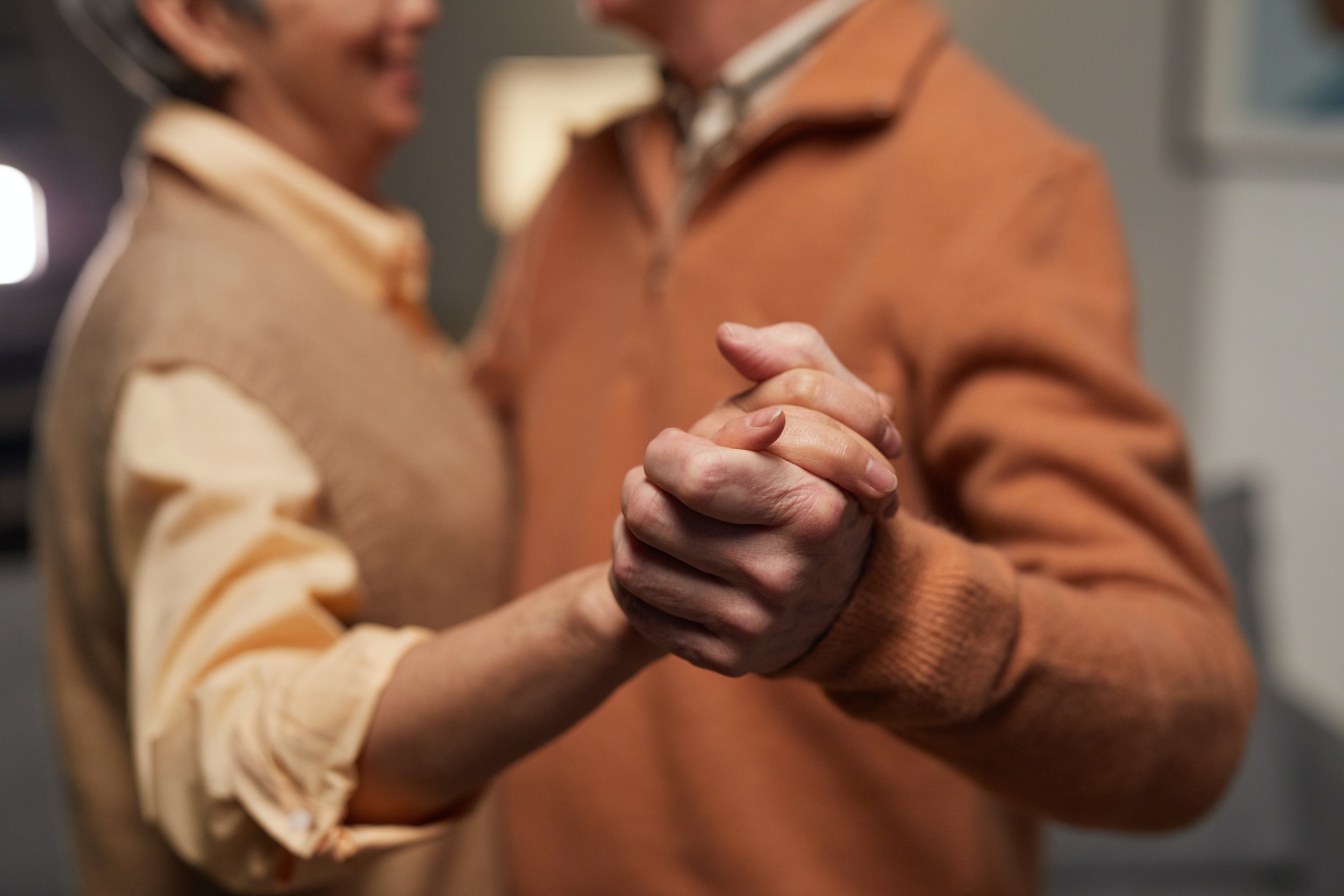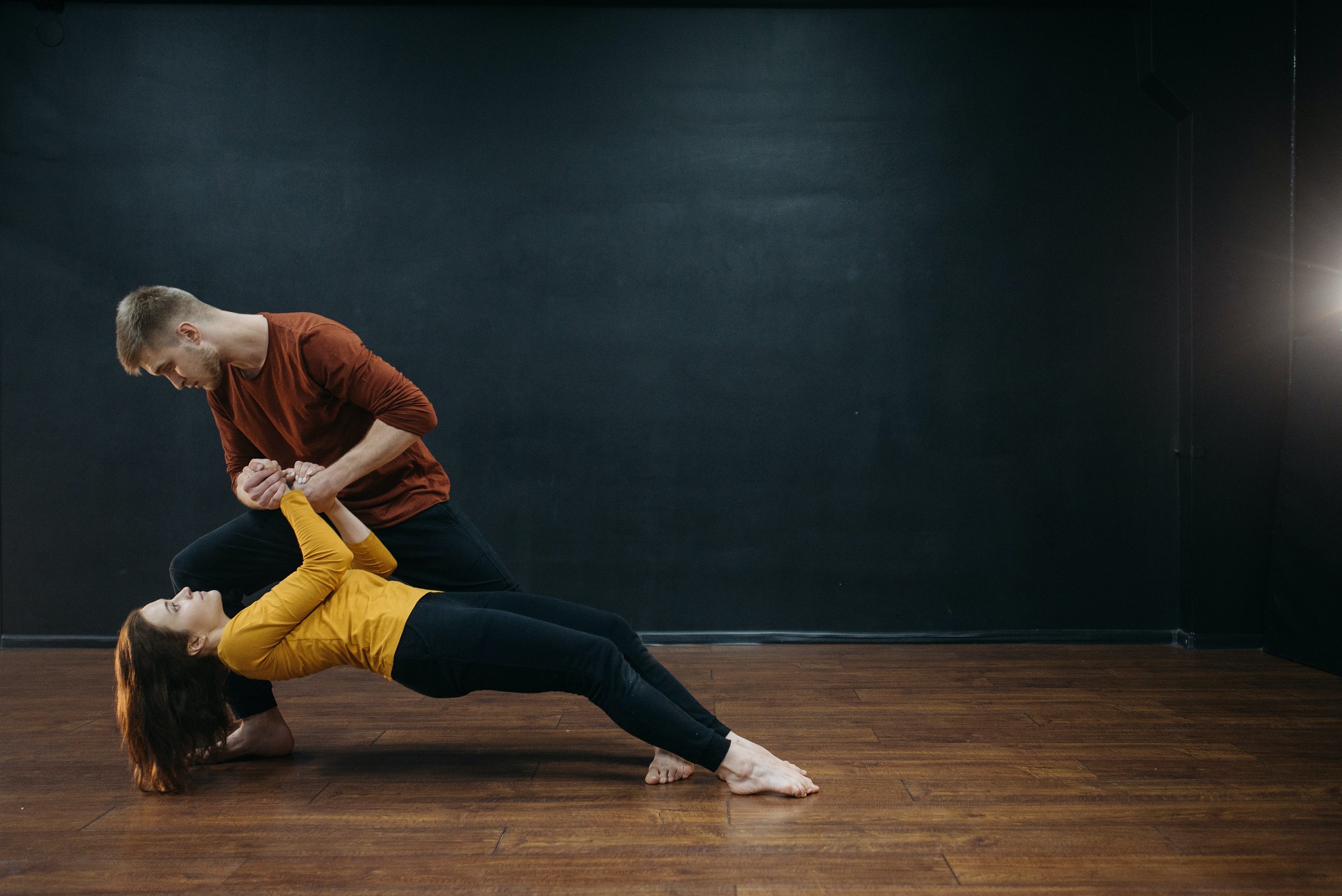Can Men Be Friends in Tango? A Duel As Old As Time
It’s undeniable that tango is one of the most passionate dances ever introduced to the world.
The connection between the leader and follower is ripe with tension, flirtation, competition, and above all else, a sense of celebration.
Tango dancers may liken the dance to a duel between two adversaries vying for dominance.
It’s unique and beautiful, but it can also be lonely for some.
Argentine tango dancer Juan Carlos Copes once said,
“The tango is the man and woman in search of each other. It is the search for an embrace, a way to be together, when the man feels that he is a male and the woman feels that she is female, without machismo. She likes to be led; he likes to lead.”
It’s romantic to think so, and it’s what makes tango different from other dances. However, the traditional roles of male and female partners in tango have also often been seen as a competition reserved for men. The duel-like nature of tango has been around since its inception, leaving beginners asking, “Can men be friends in tango?”
Gender Roles in Tango
Leader and follower — these are the two distinct roles in tango.
The leader is the strong, dominant figure who dictates the follower’s movements and initiates his steps.
On the other hand,
the follower is the sensitive figure who gracefully follows her partner’s lead.
In tango, traditional gender roles are highly valued and respected.
In modern tango, the man is typically the leader, while the woman is the follower.
In the sixth paragraph of the article “The Gender Roles in Tango,” the role of men is clearly defined:
“Men in general are physically taller, heavier, stronger and more dependable than women. They also have a psyche different from women due to men’s hunting nature formed in the millions of years of human evolution through natural selection, such as men’s need for taking initiatives, subduing, conquering, keeping under control, and protecting their loved ones, etc. Naturally, men assume the masculine role in tango as they do in life.”
Most beginners in tango are taught that men in tango represent strength and power. They are responsible for making decisions and taking charge. So, when a man learns the dance for the first time, there’s instantly pressure to dominate.
On the other hand, the 14th paragraph of the same article defines women’s roles in tango:
“In contrast, women in general do not have the build and strength of men. They are shorter, smaller, lighter, softer, more flexible, beautiful and delicate. In addition, they have a psychology different from men due to women’s reproductive nature, such as their need for beauty (to attract male), affection, protection and security, which are also the result of natural selection over millions of years of human evolution. Consequently, women assume the feminine role in tango as they do in life.”
If men are expected to be dominant, then women are expected to be submissive.
They’re the more delicate, flowing partner. Beginners often learn to rely on their leaders to provide guidance and direction.
The gender roles in tango can guide how men and women interact in the dance. Perhaps, it’s just how it is.
The downside is that it can lead to a certain rigidity in the roles, which may be seen as an imposition for both men and women. It becomes a competition between men that puts socializing and dancing on the back burner.
A Man’s Responsibility in Tango
Since men are often the default leaders in tango, they take on the challenges the role entails. If you’re a man learning tango, here are some of your many responsibilities:
Lead the Woman
In a milonga, there might be more women than men, more professional dancers than beginners, or more older people than younger. Regardless, men are expected to lead women.
Plot the Dance
Leaders must plan and know the steps, sequences, and figures before leading them. So, if men are choreographers, women become the dancers who fulfill their “choreographies.” How the dance will go depends on them.
Support the Woman
Besides plotting the dance, a leader must also support the woman. Men must be sensitive to their partners, adjusting the speed and intensity of the dance based on their partners’ needs. Moreover, a woman must work on her own balance and stability, but a man must still help her move gracefully and smoothly so they can dance their steps precisely and accurately.
Lead Her To Dance to the Music
On the dance floor, the man must guide the women with at least hints of his intentions through subtle body language, movements, and turns. A man must have musicality and be able to read the music and dance accordingly. He must allow her to dance according to the music and not to the steps.
Make Her Shine
As a leader, you must provide followers with a chance to show their interpretation and flare within the framework of the dance. The leader should give the follower the responsibility to fulfill his choreographies and make the most out of them. But at the same time, the leader supports her in adding her own flavor.
Protect Her
Regardless of how crowded the dance floor is, leaders must protect followers from getting hurt or bumped. Men do this by ensuring they follow the line of dance and maintaining the appropriate distance between themselves and other couples. Non-verbal communication allows them to be in sync and keep the dance floor safe for followers.
Pamper Her
Lastly, tango is a social dance, and men must make sure followers feel comfortable, respected, and safe. Leaders should be gentle, allowing followers to feel appreciated and connected throughout their journey on the dance floor. Whenever she’s in his arms, she must feel safe, protected, and special.
What Women Look for Men in Tango
Given all these responsibilities, it’s no surprise that women look for certain qualities in a man when they dance the tango. Of course,
followers also have their own responsibilities to fulfill in the dance, and having an excellent leader by her side will make it easier.
In tango, women want and need men who can allow them to:
Completely Surrender
A woman looks for a man who can give her the freedom to completely surrender. She wants him to be firm enough to lead her but gentle enough to let her be herself. A follower needs a leader she can completely trust.
Follow His Lead
A woman also needs a man who can lead with clarity and precision. She must feel the connection and be able to follow his lead with confidence and ease.
Be Light and Agile
Tango is a fast and energetic dance, so she needs to move quickly and gracefully. An excellent leader must help her be light and agile on her feet, not hold her back.
Dance to the Music
A woman wants a man with musicality. She needs him to be able to interpret and respond accordingly with movements and turns.
Complement Him
Women look for men whom they can complement on the dance floor. If a leader allows her to express herself, she can make the most of their collaboration.
Beautify the Dance
In tango, men must help women create beautiful shapes and movements. It’s not only about steps but also the aesthetics of the dance.
Be a Woman
Lastly, women look for men who make them feel appreciated and special. Men must be able to bring out the best in their followers, allowing her to feel like a beautiful woman, both on and off the dance floor.
The Tango Dance Floor Is a Battlefield
To summarize the role of men as leaders in tango, it’s a lot. However,
the history of roles interestingly suggests that men played both leader and follower.
As said by tango teacher Daniel Trenner in the fourth paragraph of the article “The history of the tango is actually kind of gay,” there were more eligible young men than women in the 1870s.
Men lived together in tenement housing, and a social dance was one of the few places they hoped to meet a young woman. Needless to say, the competition was fierce. And the only way to “win” was to know how to dance.
Men had to know how to be both a tango leader and a follower to be successful.
This part in history might allow us to say that men in tango were friends, but if we trace the roots of this “friendship,” it goes back to a place of competition.
As said by Gregory L. Jantz Ph.D., in “Is Competition Between Men Healthy?”:
“Men have found ways to fight against each other on the battlefield since time immemorial. Some men are soldiers, but the majority of us do not actively engage in warfare. Instead, we find other arenas besides a battlefield in which to compete.”
In tango, leaders compete with each other by ensuring that they have all it takes to fulfill their responsibilities.
And when they are confident enough that they are excellent leaders, they must attract followers and prove that they are, in fact, perfect for the role. The competition makes milongas a battlefield instead of a social gathering, which is still true today.
It has become a manly hobby in tango to compete for followers and be the best leader on the dancefloor.
Those who fail to let their followers enjoy the dance cannot retain them, leading the cycle of competition to start again.
Moreover, because the competition is fierce, leaders end up focusing on “winning.” Therefore, those who aim to socialize with other leaders and followers might only feel lonely outside the dancefloor.
It’s one of the sad truths about milongas, and many tango learners find it difficult to adjust. Men who aren’t there to “compete” but to actually socialize and learn must be ready for this reality. So, is there no hope for true man friendship within tango?
Tango and Man Friendship
No, it’s not impossible for men to be friends in tango.
Not everyone will believe so, but the fact that many men feel the same about the competition on the dance floor is enough proof.
Tango may still be an arena for competition, but it’s also a place to meet new people and learn as much as possible.
Men can always go back to assessing their leadership in tango. You can ask yourself the following questions:
Is my lead clear?
Can my followers follow with ease?
Can I hear her heart?
Can I make her comfortable in my arms?
Did I walk her back to her table and tell her I enjoyed dancing with her?
Did I tell her I hope to dance with her again soon?
These questions allow you to identify how well you lead and help you focus on being a better partner.
When men shift their attention to the fundamentals of tango and become aware of their responsibility as leaders, they can enjoy the social aspect of it.
Another trick is to make the milonga a social event yourself. Perhaps, you can wait the first song out and let the people go on their way. Those left behind are likely to be in the same boat as you. You can introduce yourself to a woman and start talking about tango, its concepts, and your experiences. When the second song comes in, you can invite them to dance.
On the other hand, if followers are left out during the first song, other leaders must also be out of the competition, just like you. You can also make friends with them and talk about tango. Share your experiences and find common ground that you can explore further.
This approach allows you to set up the environment for socialization and friendship. You’re not the only man attempting to make friends in tango; there are others like you.
Leading the Tango and Friendship
At the core of tango, there is a connection between two people.
It’s about understanding each other in the dance, being able to communicate through it, and creating something beautiful and meaningful together. Its history might have been written in competition. Still, somewhere in there is a spirit of friendship and camaraderie among men and women.
If you focus on the essence and values of tango — connection, respect, and collaboration — then it’s not impossible to make friends in milongas.
Tango is a journey of two, after all. So, yes, men can be friends in tango. That’s if you’re willing to lead in friendship!








